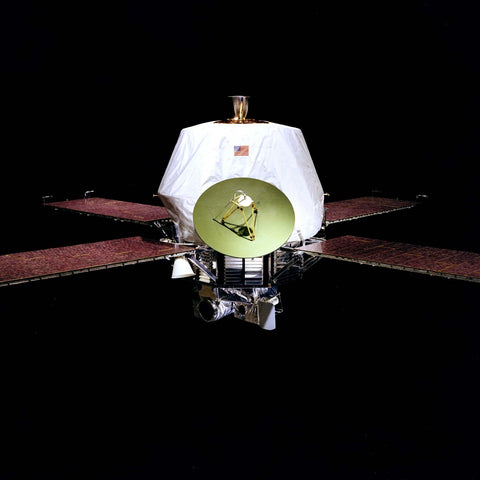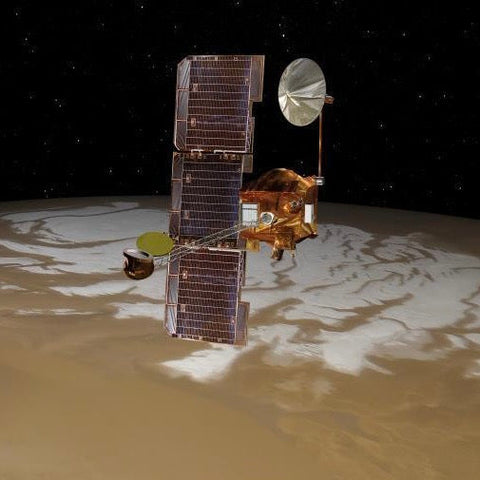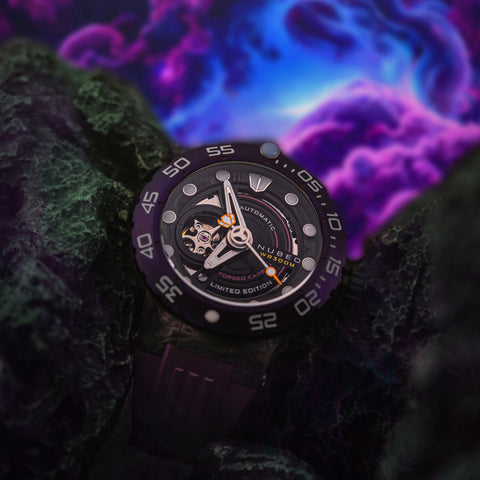In the annals of space exploration, few missions have brought us as close to the mysteries of the Red Planet as NASA's Mariner 9. Launched in May 1971, Mariner 9 became the first spacecraft to orbit Mars, revolutionizing our understanding of the Martian landscape. Join us as we revisit the historic arrival of Mariner 9 and the groundbreaking achievement of capturing the first global view of Mars.
Mariner 9: Pioneering the Martian Frontier:
Mariner 9 embarked on its mission with the goal of studying Mars in unprecedented detail. Previous Mariner missions had provided glimpses of the Martian surface, but Mariner 9 was designed to go a step further by entering orbit around the planet. Its suite of instruments included cameras, spectrometers, and other scientific tools poised to unravel the mysteries of Mars.
Arrival in the Midst of a Global Dust Storm:
As Mariner 9 approached Mars, it faced an unexpected challenge—a global dust storm had engulfed the entire planet. This atmospheric obstacle threatened to obscure the surface features that the spacecraft was meant to study. Undeterred, the Mariner 9 team patiently awaited the storm's dissipation, showcasing the resilience and adaptability of the mission.
Unveiling the Martian Landscape:
As the dust settled, Mariner 9's cameras captured the first global view of Mars. The spacecraft revealed a diverse and fascinating landscape, featuring towering volcanoes, deep canyons, and a vast equatorial canyon system later named Valles Marineris in honor of the mission. These images transformed our perception of Mars from a distant dot in the sky to a world with a dynamic and complex geologic history.
Martian Atmosphere and Climate:
Mariner 9's instruments also delved into the Martian atmosphere, studying its composition and temperature. The spacecraft's observations contributed to our understanding of the planet's climate, including the presence of polar ice caps and seasonal changes. This wealth of data laid the groundwork for future Mars missions and fueled scientific inquiries into the potential habitability of the Red Planet.
Legacy and Impact on Mars Exploration:
Mariner 9's success set the stage for subsequent Mars missions, influencing the design and objectives of orbiters and rovers that followed. The global perspective provided by Mariner 9's orbit became a valuable asset for planning future explorations, including landing sites for missions like the Mars rovers Spirit and Opportunity. The mission's legacy echoes in every spacecraft that continues to study Mars and work toward unlocking its remaining secrets.
Mariner 9's arrival and orbit around Mars marked a pivotal moment in space exploration, opening a new chapter in our understanding of the Red Planet. The spacecraft's resilience in the face of a global dust storm, coupled with its ability to capture the first comprehensive view of Mars, solidified its place in the pantheon of historic space missions. As we celebrate the achievements of Mariner 9, we acknowledge the foundation it laid for the ongoing exploration of Mars and the uncharted frontiers that await future missions.






